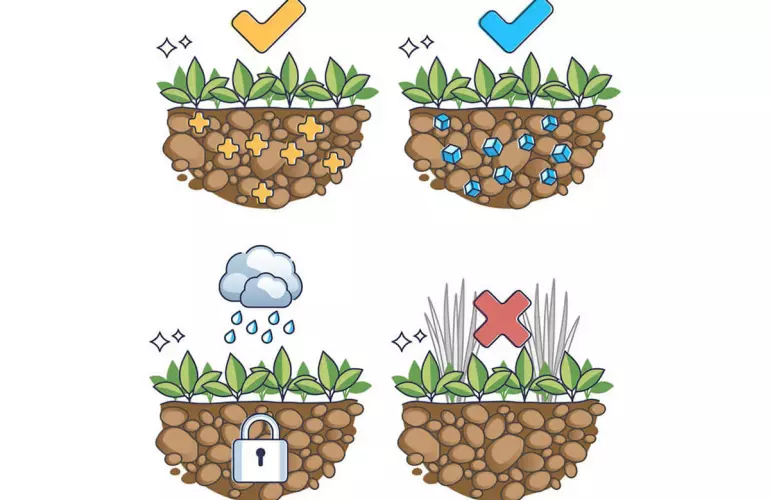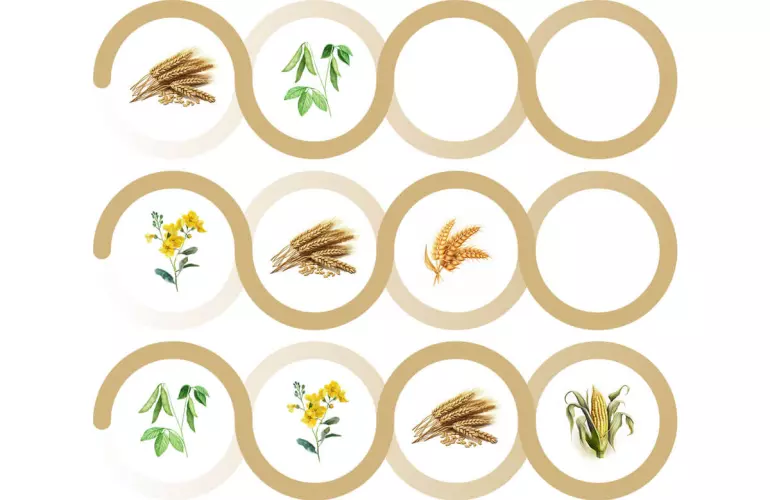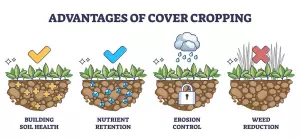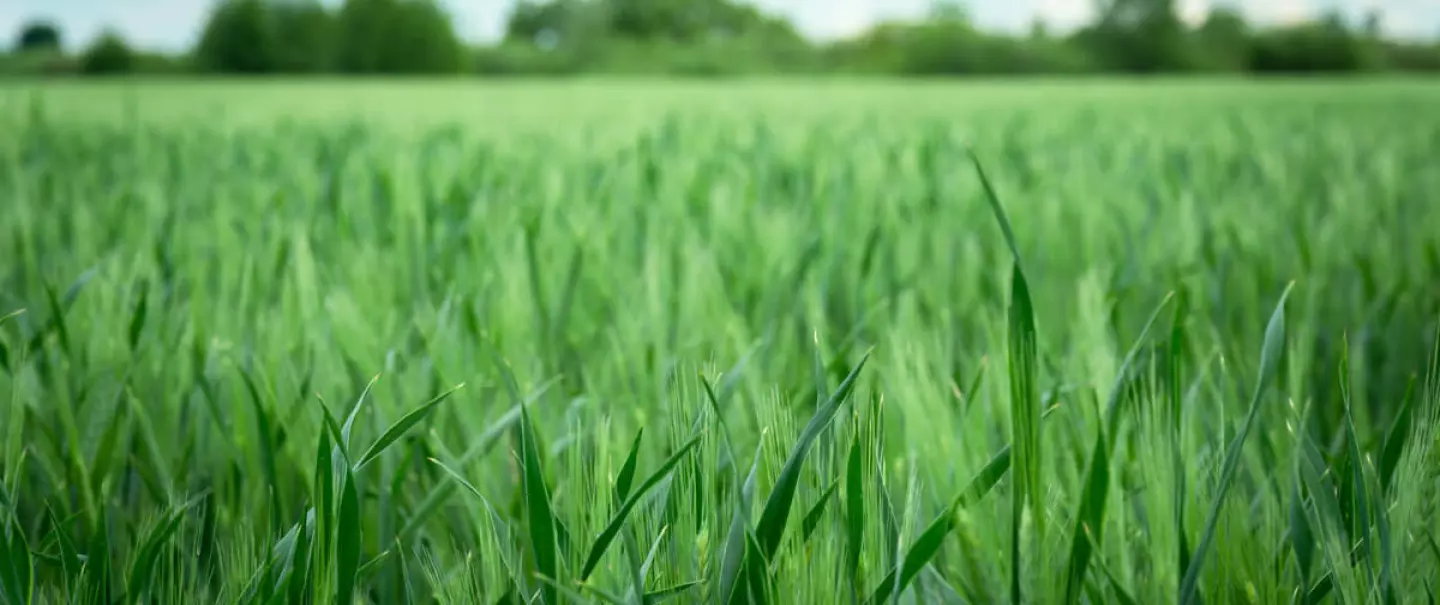
Spring crops
Spring crops are sown between February and May. Their name comes from their seeding date. Winter crops are planted between September and November. Plants used for spring sowing are often species like ...

Spring crops are sown between February and May. Their name comes from their seeding date. Winter crops are planted between September and November. Plants used for spring sowing are often species like ...
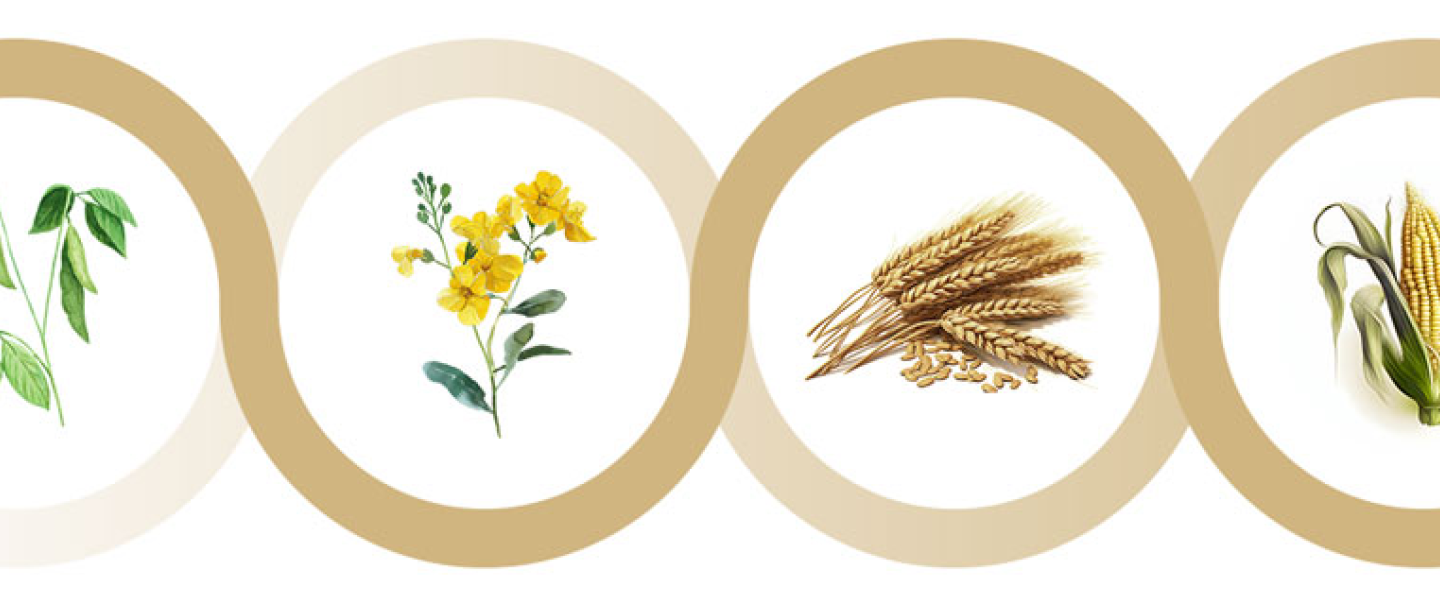
Since the Middle Ages, world agriculture has developed many crop-rotation plan possibilities, including three-year rotations with fallow land. These practices are part of so-called "agro-ecological" p...
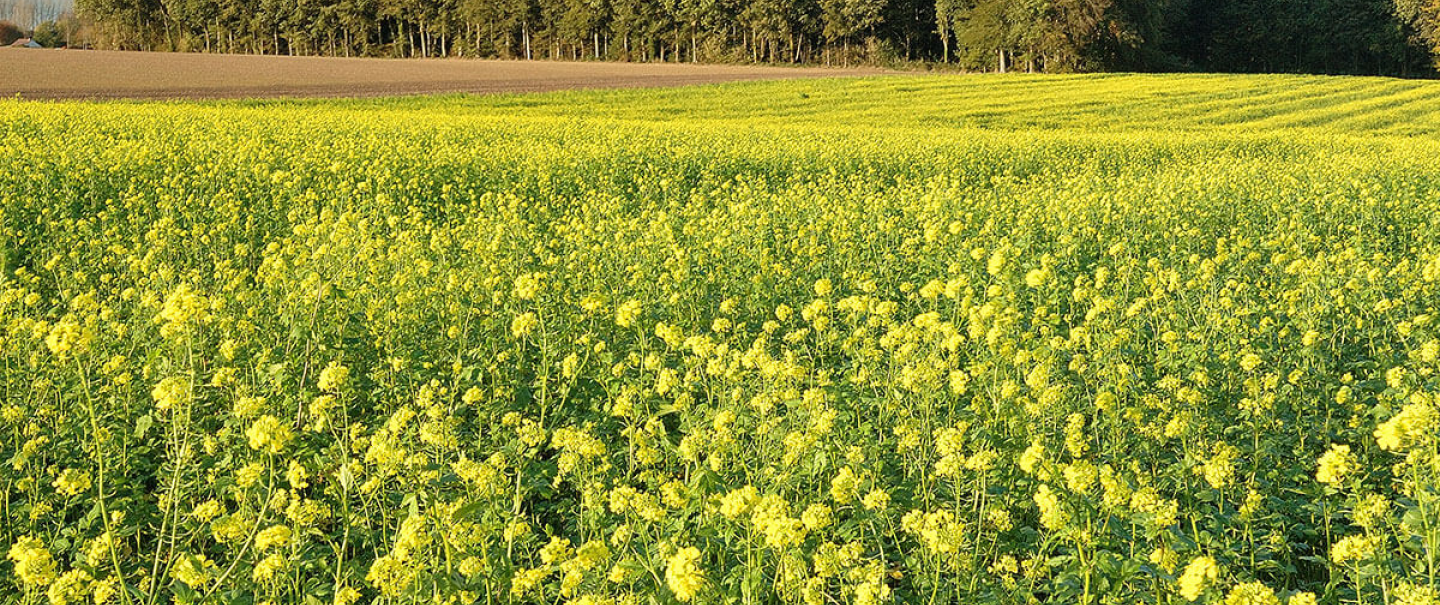
Intermediate crops are cover crops planted between main crops. They meet agronomic, economic, and regulatory objectives. They can be harvested or not. If they are not harvested, they are destroyed and...
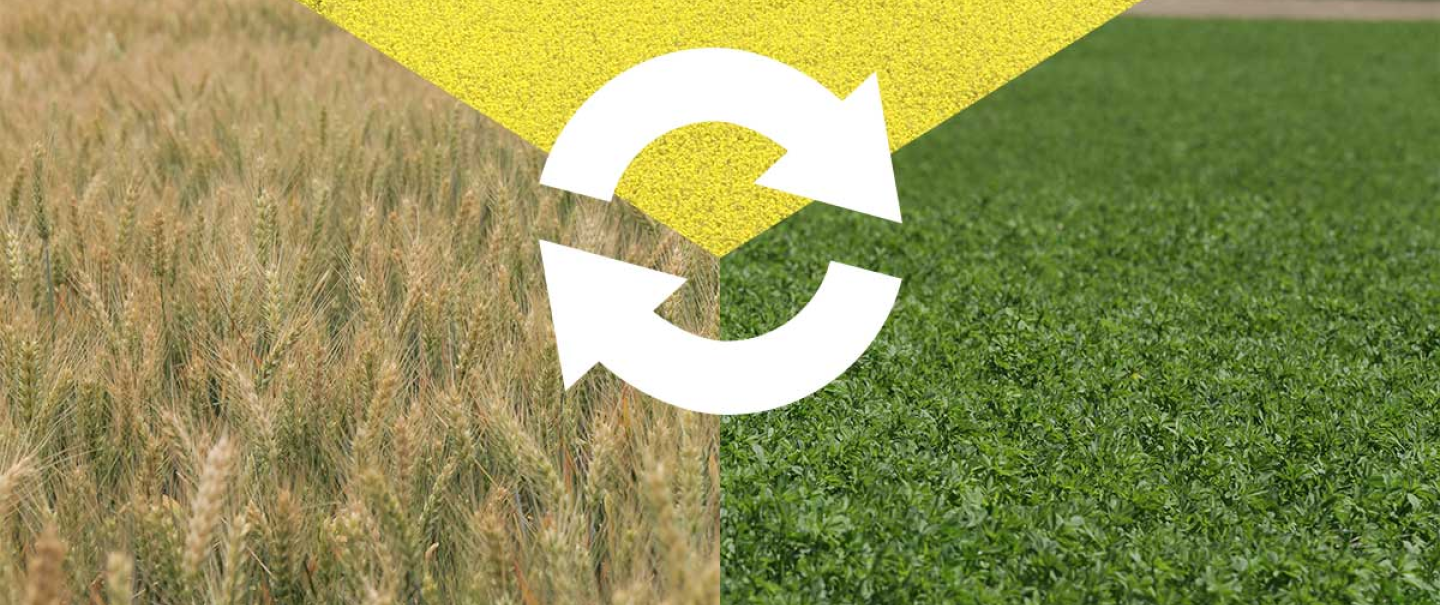
Crop rotation is an agronomic practice whose aim is to alternate different plant species on the same field, within a given time. Crops are planted in the same order, year after year, in cycles of 2, 3...

Intercropping is the period of time between the harvest of one crop and the sowing of another on the same plot. It varies in length, depending on the crops planted. Soil cover is generally recommended...
Alternating crops has two main advantages. When planned well, crop rotation can break the development cycle of bio-aggressors associated with particular plant families: especially pests and weeds. As a result, less inputs are required to destroy them. The second benefit relates to soil improvement. The aim is to improve fertility, provide nutrients and increase yields, and this is achieved by growing different crop families with complementary nutrient requirements, and different root systems. To improve the structure of topsoil and deeper layers, cover crops can be planted and their residues left on the field to produce organic matter.
Diversifying crops on a field, as part of crop rotation, requires a thorough knowledge of each crop and the associated cropping method. Therefore, it requires more technical skills than when working with a single crop. Different agricultural equipment is also required: maize is not sown the same way as wheat or a cover-crop mix, for example. The initial investment can definitely be a drawback. However, this can be overcome by grouping the purchase between neighbours, or by getting the equipment from a machinery cooperative. When you are part of an agricultural group, not only do you share machines, you can also exchange best practices to improve your crop rotations.
The practice of crop rotation started in the Middle Ages with two-year, then three-year rotations. The aim was to regenerate the soil after each harvest. At the time, there were no agricultural and fertilisation techniques to guarantee sufficient yields. Alternating 2 or 3 types of plant was recommended, with an autumn cereal such as wheat or rye, followed by a spring cereal (barley or oats), and finally a fallow period. Legumes were introduced into rotations in the 19th century which led to a significant increase in yields in Europe.
Shortly afterwards, the introduction of mineral fertilisers and plant protection products also contributed to higher yields. On the other hand, crop rotation disappeared in some regions. Monoculture systems were more profitable and easier to manage. In addition, the post-war agricultural policy encouraged one-crop systems to feed the population.
In recent years, due to the deterioration of most single-crop soils and the disappearance of certain molecules, as well as more environmentally-oriented agricultural policies, crop-rotation practices are back in favour. They now include winter cover crops or intermediate crops to protect the soil and water.
Planting cover crops between main crops in a rotation is practiced widely and is part of the crop rotation. Cover crops generally include grasses, legumes, or crucifers, either alone or mixed. There are many reasons for planting cover crops: They can be used to prevent water pollution by removing nitrates from the soil during critical periods. When destroyed, they can provide the next crop with nitrogen (green fertiliser). They can also be used between two crops to improve the structure of the soil and fertility. Cover crops also prevent soil erosion during rainy periods in the autumn. Some cover crops are used as catch crops, secondary crops, or extra fodder for livestock. They can also be used for a methanisation unit to produce gas or electricity (Biofuel-producing cover crops).
